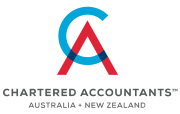
Missed the Director ID Deadline?
Have you missed the deadline to apply for a director identification number (director ID)? If so, you can still apply! The ATO says it will take a reasonable approach with directors who are trying to do the right thing. Importantly, directors who need additional time to apply (beyond 14 December 2022), can request an extension of time by completing an Application for an extension of time to apply for a director ID.
To recap, a director ID is a unique 15-digit identifier that a company director applies for once and keep forever. By allowing regulators to trace directors’ relationships with companies over time, director IDs will help prevent illegal activity and level the playing field for businesses. Director IDs are administered by the Australian Business Registry Services (ABRS), which is managed by the ATO.
WHO?
You need a director ID if you are an eligible officer of:
■ a company, a registered Australian body or a registered foreign company under the Corporations Act 2001 (Corporations Act)
■ an Aboriginal and Torres Strait Islander corporation registered under the Corporations (Aboriginal and Torres Strait Islander) Act 2006 (CATSI Act).
An ‘eligible officer’ is a person who is appointed as:
■ a director
■ an alternative director who is acting in that capacity.
You also need a director ID if you are a director of a:
■ corporate trustee, for example, of an SMSF
■ charity or not-for-profit organisation that is a company or Aboriginal and Torres Strait Islander corporation
■ registered Australian body, for example, an incorporated association that is registered with the Australian Securities and Investments Commission (ASIC) and trades outside the state or territory in which it is incorporated, or
■ foreign company registered with ASIC and carrying on a business in Australia (regardless of where you live).
WHO DOESN’T?
A director ID is not required if you are a director of an incorporated association (with no ABRN) registered with the Australian Charities and Not-for-profits Commission (ACNC), company secretary but not a director, acting as an external administrator of a company, run your business as a sole trader or partnership.
It has also been recently clarified by the ABRS that directors who resigned their directorship before 31 October 2021 are not required to obtain a director ID.
Deceased directors, as they are unable to personally apply, are also exempt.
In summary, if you run a company that is a small business, are a corporate trustee of an SMSF, operate a not-for-profit or even a large sporting club, it’s quite likely that you’re a director, and therefore you’ll need to apply for your director ID.
HOW?
The easiest way to apply for a director ID is online at the ABRS website – www.abrs.gov.au/directorID. To access the online application, use the myGovID app with at least a standard identity strength to log in to ABRS Online. You must apply personally – we as your advisor cannot apply on your behalf, however we can advise you around eligibility, and answer any other questions you may have.
While we cannot apply for a director ID on your behalf, we can advise you around eligibility, and answer any other questions you may have.
ATO new-year resolutions
The ATO has released its new year resolutions…and there is not a gym in sight!
According to the ATO, the five new year’s resolutions to keep if you want to stay on top of your tax and super in 2023 are:
1. Know if you’re in business or not
Are you earning an increasing income from a side-hustle?
If you answer ‘yes’ to a few of the following questions, the more likely it is your activities are a business:
■ Do you intend to be in business?
■ Do you intend and have a prospect of making a profit from your activities?
■ Is the size or scale of your activity sufficient to make a profit?
■ Are your activities repeated and continuous?
■ Are your activities planned, organized, and carried out in a business-like manner? For example, do you:
• keep business records and have a separate business bank account?
• advertise and sell your goods and services to the public, rather than just to family or friends?
• operate from business premises?
• maintain required licences or qualifications?
• have a formal business plan or budget?
• have a business name or an ABN?
We can help you make this call as to whether your side-hustle may be a business.
2. Keep business details and registrations up to date
It’s important to keep your ABN details up to date as emergency services and government agencies use this information to support businesses during disasters. Also, if you’re going to earn over $75,000 this financial year, you’ll need to register for GST.
Even if your turnover is below this threshold, it may be advantageous to register.
3. Keep good records
Good record keeping helps you manage your business and its cash flow. It also is your defense should the ATO make an enquiry about your affairs, or select your business for an audit. Feel free to approach us if you need assistance with your record keeping practices.
4. Work out if the PSI rules apply to you
The Personal Services Income (PSI) rules are a suite of ATO provisions designed to prevent persons who derive income from their personal services from “splitting” or “alienating” that income with other persons, and therefore minimising the overall tax payable.
If you cannot pass one of the tests within the PSI rules and do not have a personal services business determination (PSBD) from the Commissioner, then regardless of the trading structure you choose, your PSI income derived will be classified as PSI, which means:
■ you will be unable to claim certain deductions against your PSI (basically, your deductions will be limited to those of a normal employee)
■ your PSI, less allowable deductions, will be attributed to you, and therefore included in your individual tax return, and taxed at your individual marginal tax rate as though you were an employee.
We can assist you in determining whether these rules apply to you and answer any questions you have.
5. Look after yourself
The last few years have thrown some curve balls at small business, so it’s good to be prepared. If you’re struggling, the NewAccess program can help. It’s free, confidential, and designed for small businesses doing it tough.
Chat with us if you want to know more about these hot-button new year issues.
Reduction in downsizer eligibility age
The eligibility age for downsizer contributions reduced from 60 to 55 years from 1 January 2023. This means if you are age 55 or older, you could invest the proceeds of the sale of your family home to your superannuation outside of your standard contribution caps.
DOWNSIZER CONTRIBUTIONS
From 1 January 2023, if you’re aged 55 years or older you may be eligible to make a downsizer contribution of up to $300,000 (or $600,000 for a couple) to your superannuation fund from the proceeds of the sale of your home where specific requirements are met.
Downsizer contributions can be a great way of boosting your superannuation after retirement.
As well as the extra capital they introduce, the contributions can also earn investment income that is either tax-free if you commence an income stream with the funds or be taxed at a concessional tax rate of as low as 15% whilst in accumulation phase.
ELIGIBILITY REQUIREMENTS
To be eligible to make a downsizer contribution, you must answer ‘yes’ to all of the following conditions:
1. You must be aged 55 or over from 1 January 2023 (or age 60 or over for any downsizer contributions made between 1 July 2022 and 31 December 2022. Note, prior to 1 July 2022, the eligibility age was 65 years and over).
2. The amount of the contribution is an amount equal to all or part of the sale proceeds (capped at $300,000 per person) of a qualifying main residence, where the contract of sale of the main residence was exchanged on or after 1 July 2018.
3. The home was owned by you or your spouse for 10 years or more prior to the sale. Further, your home must be in Australia and must not be a caravan, houseboat or other mobile home.
4. The proceeds of selling your home are either fully exempt or partially exempt from capital gains tax under the main residence exemption or, if the home was acquired before 20 September 1985, would have been exempt.
5. You make the downsizer contribution within 90 days of receiving the proceeds of sale (ie, usually settlement date).
6. You complete and provide the ‘Downsizer contribution into super form’ (NAT 75073) which is available on the ATO website and provide it to your superannuation fund either before or at the time of making the downsizer contribution.
7. You have previously not made a downsizer
Provided that the above conditions are met:
■ There is no obligation to purchase a new home or to move to a smaller or cheaper home…you can even move into another home you own! You simply need to sell your home and meet the above criteria to make a downsizer contribution.
■ There is no maximum age limit to make a downsizer contribution.
■ The downsizer contribution does not count towards your non-concessional or concessional contributions caps. The contribution is in addition to these caps.
■ There is no requirement to meet a work test or work test exemption to make a downsizer contribution, and
■ Downsizer contributions can be made regardless of the size of your total superannuation balance (TSB). This means a downsizer contribution can still be made even if you have more than $1.7 million in superannuation.
DOWNSIZER CONTRIBUTIONS COUNT TOWARDS YOUR SUPER BALANCE
While downsizer contributions can be made regardless of what your TSB is, once the downsizer contribution is made to superannuation it forms part of your TSB.
At this point, the downsizer contribution will increase your TSB which may impact your eligibility to:
■ Make carry forward concessional contributions
■ Make non-concessional contributions
■ Receive government co-contributions, and
■ Receive a tax offset for spouse contributions.
Similarly, a downsizer contribution will also count towards your transfer balance cap (TBC), which applies when you move your superannuation into retirement phase to commence an income stream.
So if you intend to use your sale proceeds to commence a superannuation income stream in retirement, it’s important to note that you have a personal TBC of up to $1.7 million on the total amount that can be transferred from a superannuation account into a tax-free superannuation income stream. You can find out your personal TBC by contacting the ATO or logging myGov.
PRESERVATION CONSIDERATIONS
Although the age to make a downsizer contribution has reduced to age 55, you should be aware that the contribution will be preserved until you satisfy a condition of release, such as retirement after reaching your preservation age (currently age 59) or ceasing a gainful employment arrangement after reaching age 60.
However, if you have retired or met another condition of release that frees up your superannuation, the downsizer contribution could still be accessed to provide an income stream but it will have to be by way of a transition to retirement income stream, which is slightly more restrictive than a regular income stream, such as an account-based pension.
NEED ADVICE?
Although making a downsizer contribution may seem to be a straightforward strategy, there are a number of eligibility requirements and nuances that you must be aware of when utilising these rules. If you’re thinking about downsizing and contributing to superannuation but want more information, we can help explain the rules in further detail and discuss how you may benefit from this scheme, based on your particular circumstances.
The importance of cash flow forecasts
As we enter into the new year, with many economists predicting a slowing of the economy, planning your business’s cashflow is more important than ever.
Studies suggest that the failure to plan cash flow is one of the leading causes of small business failure. To this end, a cash flow forecast is a crucial cash management tool for operating your business effectively.
Specifically, a cash flow forecast tracks the sources and amounts of cash coming into and out of your business over a given period. It enables you to foresee peaks and troughs of cash amounts held by your business, and therefore whether you have sufficient cash on hand to fund your debts at a particular time.
Moreover, it alerts you to when you may need to take action – by discounting stock or getting an overdraft, for example – to ensure your business has sufficient cash to meets its needs. On the other hand, it also allows you to see when you have large cash surpluses, which may indicate that you have borrowed too much, or you have money that ought to be invested.
In practical terms, a cash flow forecast can also:
■ make your business less vulnerable to external events in the economy, such as interest rate rises
■ reduce your reliance on external funding
■ improve your credit rating
■ assist in the planning and re-allocation of resources, and
■ help you to recognise the factors that have a major impact on your profitability.
At this point distinction, a distinction should be drawn between budgets and cash flow forecasts.
While budgets are designed to predict how viable a business will be over a given period, unlike cash flow forecasts, they include non-cash items, such as depreciation and outstanding creditors. By contrast, cash flow forecast focus on the cash position of a business at a given period. Non-cash items do not feature. In short, while budgets will give you the profit
position, cash flow forecasts will give you the cash position.
Cash flow forecasting can be used by, and be of great assistance to, the following entities:
■ business owners
■ start-up business
■ financiers
■ creditors
A cash flow forecast is usually prepared for either the coming quarter or the coming year. Whether you choose to divide the forecast up into weekly or monthly segments will generally depend on when most of your fixed costs arise (such as salaries, for example). When you are making forecasts, it is important to use realistic estimates. This will usually involve looking at last year’s results and combining them with economic growth, and other factors unique to your line of business.
When forecasting overheads, usually a forecast will list:
■ receipts
■ payments
■ excess receipts over payments (with negative figures displayed in brackets)
■ opening balance
■ closing bank balance.
Reach out to us if you would like to know more.
Can you use your SMSF property upon retirement?
Many SMSF trustees wonder if they can live in their SMSF property once they retire. This is a common question particularly as property is such a popular SMSF investment.
However, despite superannuation being your own money, there are certain rules around accessing your superannuation which prohibit you from not only using your superannuation to purchase a property, but to live it in now and in retirement.
Property as an SMSF investment
Superannuation law allows SMSF trustees to purchase property via their SMSF. However there are strict rules regarding the purchase of property and how it can be used.
For example, the law allows you to purchase property through your SMSF provided the property:
■ Meets the ‘sole purpose test’ of solely providing retirement benefits to fund members
■ Complies with the SMSF’s investment strategy which must allow the acquisition of property
■ Is not acquired from a related party of a member (except for business real property)
■ Is not lived in by a fund member or any fund members’ related parties, and
■ Is not rented by a fund member or any fund members’ related parties (except for business real property).
It should also be noted that the title of the SMSF property must be held by the trustees on behalf of the superannuation fund and rent from the SMSF property must also be paid into the SMSF. As owner of the property, your SMSF is responsible for all costs related to the upkeep and maintenance of the property.
As can be seen, the rules around how a SMSF manages investments are stringent and therefore prohibit you from living in a property owned by your SMSF.
What is the sole purpose test?
The sole purpose test is an important rule that must be considered when purchasing investments, such as property, by your SMSF.
For your SMSF to be eligible for concessional tax treatment, your fund must meet the sole purpose test. The sole purpose test requires a superannuation fund to be maintained for the sole purpose of providing retirement benefits to its members, or to their dependents if a member dies before retirement.
In other words, the superannuation sole purpose test dictates that your investments must be for the benefit your retirement and therefore cannot enhance your own personal lifestyle needs. Your SMSF will fail to meet the sole purpose test if your SMSF provides a pre-retirement benefit to yourself as a member of the SMSF.
The risk of contravening the sole purpose test could cause your fund to lose its concessional tax treatment and you as trustee could also face civil and criminal penalties.
What are my options at retirement?
Upon retirement, the only way you can move into a property that has been purchased by your SMSF is by transferring the property from your SMSF to you as a member in your own personal capacity. This is also known as an ‘in-specie transfer’ meaning your SMSF transfers its asset to you personally.
Undertaking an in-specie transfer will avoid breaching the sole purpose test in the event that you reside in the property as you will not be obtaining a present-day benefit or personal use of an SMSF asset.
An in-specie transfer is only possible once you meet a condition of release (such as retirement after reaching your preservation age or ceasing a gainful employment arrangement after reaching age 60) and are legally allowed to access your superannuation.
Beware of perils of tax and duties
It is important to carefully consider any potential capital gains tax (CGT) on a transfer of property between an SMSF and the members of an SMSF in their personal capacity. Generally speaking, if a property is solely supporting the payment of one or more pensions for fund members, CGT may not apply.
Further, any potential transfer or stamp duty must also be considered as it may apply depending on your state or territory jurisdiction.
TAKE CARE!
Just because you have reached preservation age or are retiring doesn’t mean you can use or live in your SMSF owned property after retirement. If you’re thinking about investing in property via your SMSF or are thinking about taking your SMSF-owned property out of your SMSF so you can use it for yourself, be sure to contact us for a chat before you make any decisions.
ATO finalises Section 100A guidance for Family Trusts
Do you operate your business via a family trust? The ATO released its final guidance material on the application of section 100A on 8 December 2022 – TR 2022/4 and PCG 2022/2. In doing so, it has fortunately clarified a number of issues.
To recap, the ATO in February 2022 updated its guidance around trust distributions made to adult children, corporate beneficiaries and entities that are carrying losses. Depending on the structure of these arrangements, potentially the ATO may take an unfavourable view on what were previously understood to be legitimate distribution arrangements. The ATO is chiefly targeting arrangements under section 100A of the Tax Act, specifically where trust distributions are made to a low-rate tax beneficiary but the real benefit of the distribution is transferred or paid to another beneficiary usually with a higher tax rate. In this regard, the ATO’s Taxpayer Alert (TA 2022/1) illustrates how section 100A can apply to the quite common scenario where a parent benefits from a trust distribution to their adult children.
The final guidance is not the law and represents no more than the ATO’s view about how the law applies. It carries no legal authority, and clients in consultation with us as your advisor may consider venturing out into deeper and rougher waters, depending on your circumstances.
Following the release of the ATO material, there are a number of risk management options going forward:
■ Only distribute to Mum and Dad – This would be quite safe from section 100A scrutiny. No person pays less tax as a result of any agreement, and this is unlikely to be seen as high-risk by the ATO.
■ Continue to distribute to young adult beneficiaries, but hand over the money – If you are happy to give money to your children, this can be achieved while at the same time optimizing tax.
■ Charge board and current university fees – If adult beneficiaries are living at home, they should pay board (just as if they had a job). This will not add up to large sums, but arm’s-length board for a full year could come to about $18,000. This allows for some tax arbitrage without handing the kids any money.
■ Use of bucket company – Having a private corporate beneficiary caps the tax rate imposed on trust income. Franked dividends can subsequently be flexibly allocated through having a trust structure interposed between the bucket company and the beneficiaries. The present entitlement can be lent back to the trustee for use in the business of the trust, although there are minimum repayment conditions. Avoid having the main trust as a shareholder in the bucket company. The ATO considers circular income flows to be high-risk.
■ Be alert for the “no reimbursement agreement” argument – If you are contemplating making a gift or an interest free loan to another person, ask questions about the circumstances behind this plan. If it was not in contemplation at the time of the relevant appointment of trust income (up to two years ago), but has arisen because family circumstances have changed recently, there may not be a reimbursement agreement.
■ If making gifts, go once and go big – You are unlikely to escape ATO attention if you have beneficiaries making gifts or loans year- after-year. So, where there is a strong argument to support the ordinary dealing exception, try to make it once-off, and for a significant amount if possible.
If you are impacted, reach out to us to determine which option is best for you and your business.
Click here to view Glance Consultants Newsletter February 2023 via PDF










